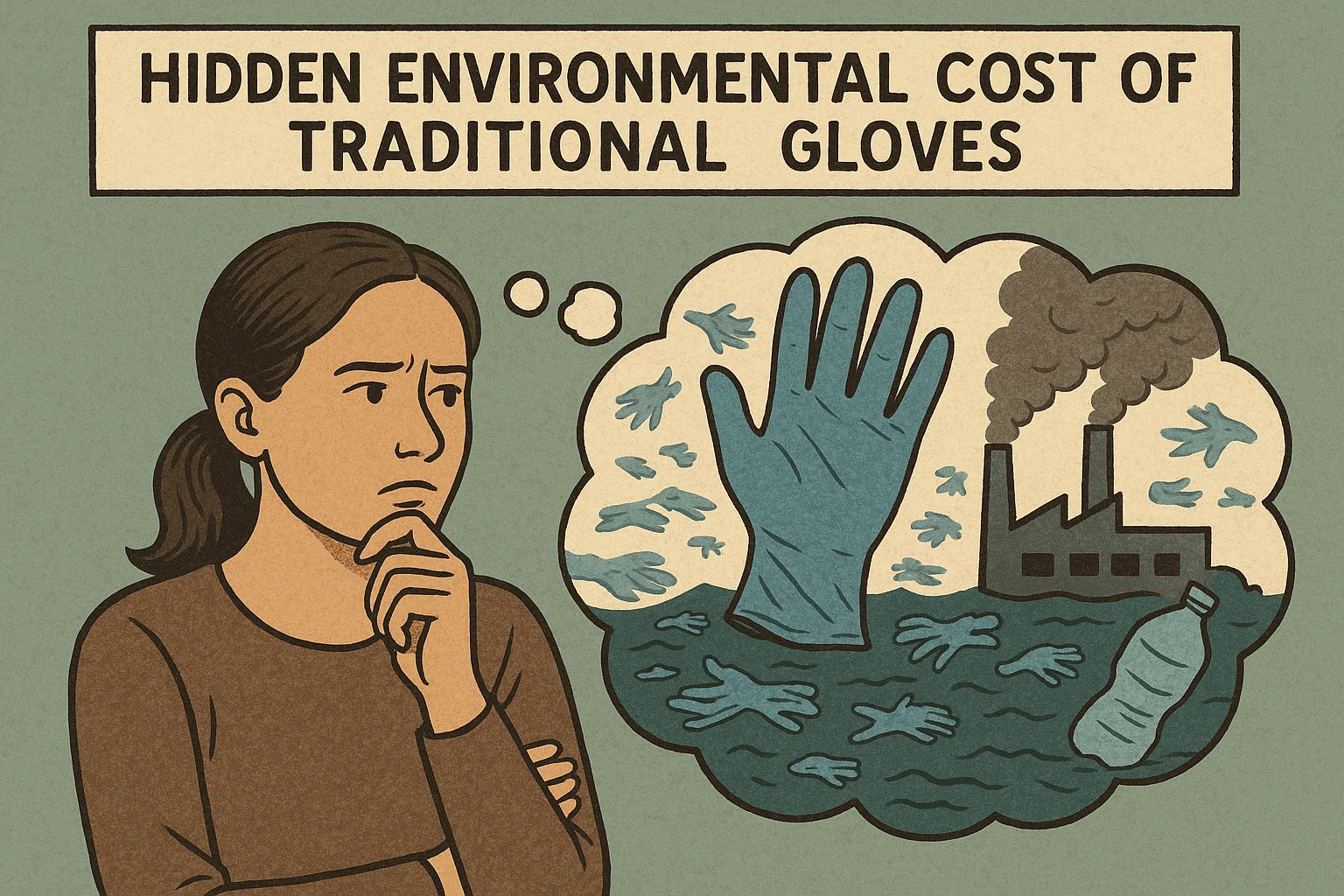Disposable gloves are used in everywhere such as hospitals, kitchens, and factories. It keep our hands safe from germs, chemicals, and other hazards. From healthcare workers to food handlers, these gloves are a simple yet essential protective barrier.
However, there is a trade-off. While gloves protect our health, they do not always protect the planet. Millions end up in landfills each year, raising the question: Can we really have disposable gloves that are both safe and eco-friendly? In this article, we will look at that balance and explore biodegradable options that could change the game.
The Hidden Environmental Cost of Traditional Gloves

A majority of traditional gloves, including the nitrile and the vinyl, are of petroleum products. That is to say that they do not decay easily- at times, hundreds of years. In the meantime, small pieces are able to become micro plastics pollution, contaminating the soil, rivers, and oceans.
The environmental expense is high. Landfills are brimming, soil and water are contaminated and we are using non-renewable resources to prepare products that we use within a few minutes. Companies such as the World Wildlife Fund (WWF) caution that unless these mere safety measures are transformed, they may develop ecological issues in the long run.
Dissecting Decomposition — Nitrile, Latex, and Vinyl Compared
Not all gloves are created equal when it comes to biodegradability. Latex gloves, made from natural rubber, are the most eco-friendly, breaking down in as little as five years under the right conditions. Nitrile gloves, while strong and chemical-resistant, take much longer because they are made from synthetic polymers.
Vinyl gloves are the worst for the environment. Made from PVC, they release harmful chlorine-based toxins as they break down. When picking gloves, it is important to consider more than just safety. Look at material composition, chemical resistance, and environmental impact to make a smarter choice.
The Game Changer — Innovations in Biodegradable Gloves
The good news is that glove technology is catching up. Biodegradable nitrile gloves now include organic additives that help microbes break them down faster. Gloves made with Eco Best Technology (EBT) can decompose in just 1–5 years in active landfills, turning into biogas and nutrients for soil instead of lingering as waste.
Companies like SHOWA and INTCO Medical are leading the way in sustainable glove solutions. Plant-based and compostable gloves are also hitting the market, giving industries more eco-friendly options. These innovations prove that we do not have to sacrifice safety for sustainability.
Beyond the Material — Choosing Eco-Friendly and Compliant Gloves
Switching to biodegradable gloves is about more than just being green. It helps companies meet sustainability goals, build brand trust, and stay compliant with global safety standards. When shopping for gloves, make sure they meet ASTM standards and EN testing standards for medical exams (ASTM D6319), chemical protection (EN 374), and puncture resistance.
Proper disposal is key. Industrial composting or landfill-friendly methods ensure gloves actually break down as intended. In addition, watch out for greenwashing, always check certifications to confirm that gloves are genuinely eco-compliant.
Commitment to a Greener Future
Biodegradable gloves of the modern times demonstrate that there is a way of balancing safety, performance, and environmental responsibility. Using such gloves, industries will have an opportunity to minimize waste, reduced carbon footprint, and demonstrate sustainability leadership.
Being green is not only good to the environment but also business wise. To the individuals seeking safety and sustainability, Bracket Company is one of the best suppliers of disposable gloves in Canada, and they are determined to provide consumers with products that have the ability to safeguard their people and the environment.

